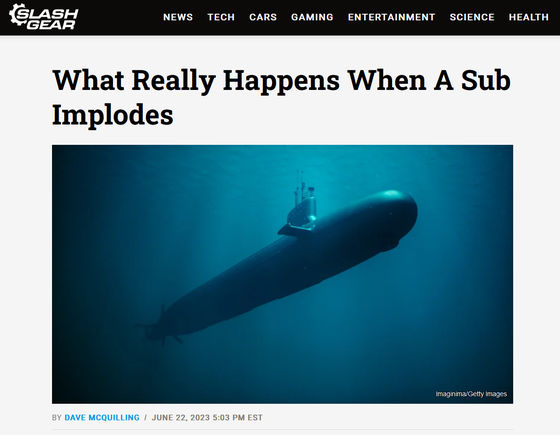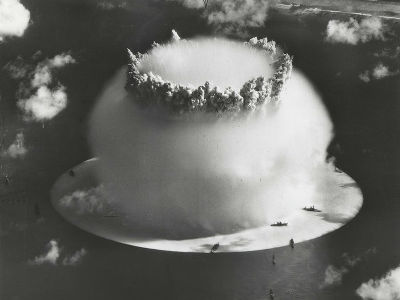What is 'implosion' that instantly destroys a submarine?

The U.S. Coast Guard has announced that they have found debris from the submarine Titan, which went missing after diving to a depth of nearly 4,000 meters to see the sunken luxury liner Titanic in the Atlantic Ocean. The discovered fragments are from around Titan's pressure chamber, and are thought to have been crushed by Titan's implosion. SlashGear, a news site familiar with vehicles and technology, explains what an implosion is that instantly crushes a submarine.
What Really Happens When A Sub Implodes
https://www.slashgear.com/1321221/what-happens-when-sub-implodes/

There is air everywhere we live, and although there are differences depending on the location, the atmospheric pressure is basically 1 atmosphere (approximately 1013 hectopascals). This means that the weight of the air in the atmosphere is being pressed against your body.
Implosion is a phenomenon in which strong pressure from all around is applied, resulting in destruction. In an explosion, pressure acts from the inside to the outside, while in an implosion, pressure acts from the outside in. In the deep sea, the weight of water, which is heavier than air, presses down on you, creating an enormous amount of pressure that would be unimaginable on land.
For example, we will calculate the water pressure at a depth of approximately 3,800 meters, where the fragments of the Titan submersible were found. Water pressure is determined by liquid density (kg/m 3 ) x gravitational acceleration (m/s 2 ) x water depth (m), so the water pressure at a depth of 3800 m is 1020 x 9.8 x 3800 = approximately 380,000 hectopascals. I understand. This means that the pressure is approximately 375 times greater than on the ground.

Since the inside of a submarine is filled with air, the pressure is basically 1 atmosphere. Submarines are designed to not collapse even under tremendous water pressure due to their materials and structure, but there is a threshold depth, beyond which the structure of the submarine cannot withstand the surrounding pressure and implodes. It will be.
If you play the following movie from around 3 minutes and 3 seconds, you can see a slow motion video of light bulbs and glass bottles being crushed by water pressure. You can clearly see how a sealed thick glass bottle instantly implodes and breaks when a certain pressure is exceeded.
Deep Sea Implosions in Slow Motion | How Deep Can a Light Bulb Go? - YouTube
The Titan used for this tour was said to be able to withstand water depths of only 1,300 meters. Since water pressure is proportional to water depth, Titan was experiencing water pressure approximately three times its performance limit.
The safety of the tourist submarine that went missing near the Titanic was questioned from the early stages of development - GIGAZINE

An implosion occurs when a submarine can no longer withstand the pressure around it. If the ship dives deeper than its performance limits, the pressure will cause the hull to break, causing an implosion and crushing the ship. For example, in 1963, the U.S. military's nuclear submarine Thresher lost propulsion due to engine trouble and was crushed at a depth of more than 600 meters.
The explosion and compression caused by large water pressure is an instantaneous event, and it is said that even a huge submarine can be crushed within one second. Of course, the human body is not structured to withstand being suddenly exposed to pressures equivalent to 1 to 375 atmospheres, so SlashGear said that the human body would die before the central nervous system could recognize that something was wrong. I am.
Related Posts:
in Free Member, Video, Science, Vehicle, Posted by log1i_yk






